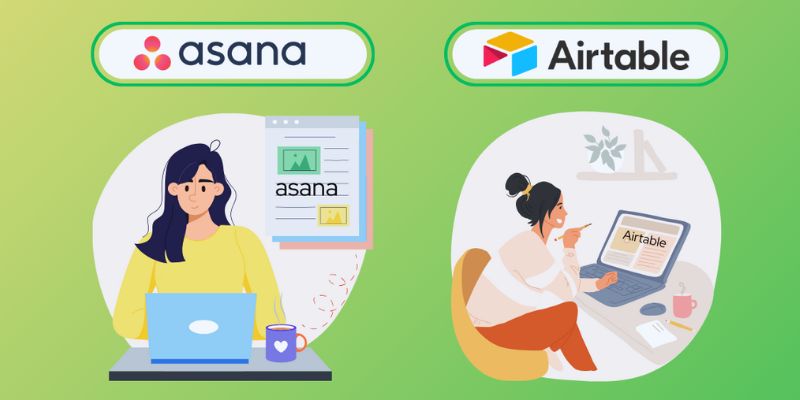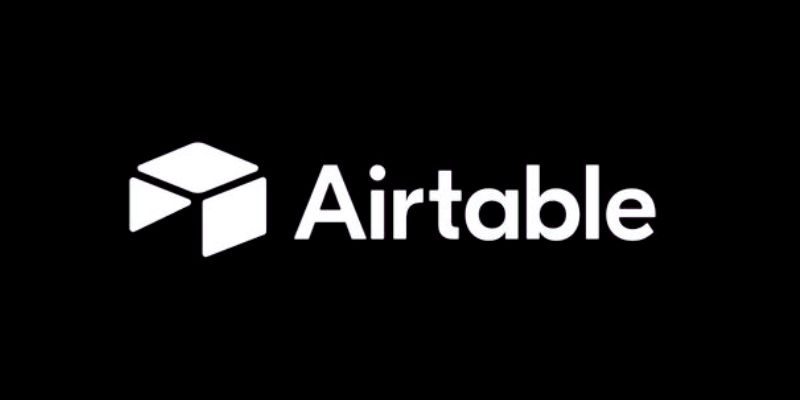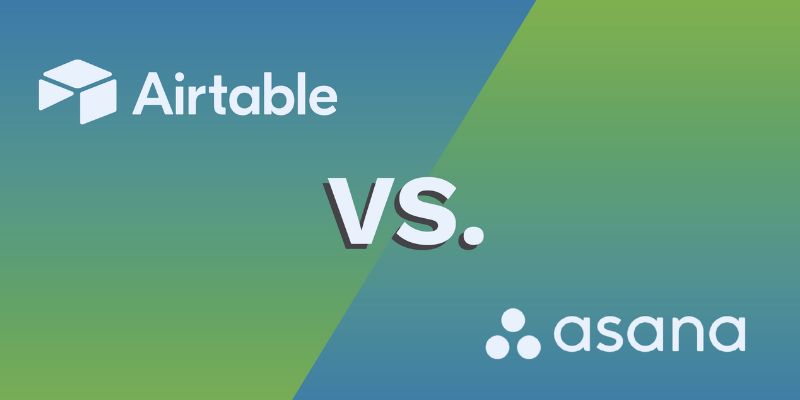Comparing Airtable and Asana in 2025: Which Tool Should You Choose
Advertisement
Selecting the appropriate productivity tool can be difficult, particularly considering the abundance of excellent choices available. These two are among the most often used: Airtable and Asana. While they work differently, both help teams stay organized and get things done. Working like a smart spreadsheet, Airtable is adaptable.
Asana is more concerned with tasks and group projects. Which then ought you to choose in 2025? Your team's working style and what you need—deep data organization or basic task tracking—will determine the solution. Here, we will compare Airtable with Asana side by side in this article. You will learn about their characteristics, advantages, and drawbacks to guide your choice of one for your squad.

Airtable
Teams handling structured data and thorough procedures will find great use for Airtable. It lets you link vast volumes of data by combining a spreadsheet's simplicity with a database's capability. Customized tables, record linking across views, and system building that matches their particular process are just a few of the things teams can accomplish.
For marketing teams, researchers, content strategists, and anyone handling challenging data, Airtable is a great option because of its adaptability. Like grids, calendars, galleries, and Kanban boards, its points of view enable users to see their work in many dimensions. Airtable links with well-known apps such as Slack, Google Drive, and Zapier, and it also allows automation. You can set rules to save time on repetitive tasks and automate actions.

Asana
Asana is a user-friendly project management solution that enables teams to remain efficient and orderly. Task tracking, open communication, and progress monitoring take the front stage here. Using Asana, you can start a project, divide it into chores, allocate work, and schedule deadlines. Everything is plainly shown and easy to follow.
To handle your chores the manner that most fits you, utilize calendar view, board view—akin to Kanban, or list view. One of Asana's strongest points is its simplicity. Beginning users will find it simple, given a neat design and useful elements. Asana fosters team building through real-time updates, comments, file sharing, and status tracking. Teams who wish to keep everyone on the same page without much complication would find great value in this decision.
Key Differences Between Airtable and Asana
Below are the key differences between Airtable and Asana to help you decide which tool fits your team's needs:
Customization vs. Simplicity
For teams dealing with big data or challenging projects, Airtable is perfect since it provides extremely flexible views that let users develop customized processes. Choose from several displays, including grids, Kanban boards, or calendars; construct different kinds of tables and link records. By contrast, Asana emphasizes simplicity. Teams that wish for a no-fuss task management system will find it ideal since its UI is simple and easy to operate. Asana's simplicity lets users adapt quickly and start planning activities and working without much setup, even if its features are limited in customizing.
Task Management and Collaboration
Task management is Asana's strongest suit; it lets teams assign work, create deadlines, and easily monitor advancement. It facilitates teamwork through comments, file sharing, and status updates. It offers several approaches to view chores, including lists, boards, and calendars. Airtable is more focused on organizing and analyzing data, even if it can handle chores. It's less appropriate for teams valuing efficient job tracking and collaboration since its task management tools are less developed than those of Asana.
Flexibility and Database Functionality
With its adaptability and strong database-like architecture that lets teams effectively handle big volumes, Airtable shines. Users may visually and intuitively manage complicated data, link several tables, and create relational databases. By contrast, Asana does not provide the same degree of data processing customizing. Asana can build sophisticated databases, even if they are great for monitoring chores and projects. If your team handles complex data, Airtable's database features will be preferable since they provide more freedom and control over your data.
Ease of Use
Since Asana is so user-friendly, it is ideal for teams looking for a quick, basic way to coordinate projects and handle chores, as well as for newcomers. Its clear and simple UI contains easily navigable elements. However, because of its database character, Airtable calls for more study. Although it's not too complex, individuals not experienced with databases could need time adjusting to its organization. Asana's simplicity will fit you better than Airtable. If you're seeking a tool, you can pick it up fast with little instruction.
Integrations and Automation
Strong integrations with outside programs such as Slack, Google Drive, and Dropbox abound from Airtable and Asana. Airtable goes one step further by letting users automate processes across several applications by linking with Zapier. Teams wanting sophisticated automation systems may find great benefit from this. Asana has automation tools, including task dependencies, repeating chores, and rule-based triggers. It might not have the same degree of customization that Airtable gives for automated processes.
Which Tool is Right for You?
Your team's requirements and process will determine which Airtable and Asana fit best. Asana is the best fit if your priorities are team cooperation and task management. It provides an easy-to-use interface for teams of all kinds, facilitating task tracking, deadline setting, and communication nurturing. Organization and keeping everybody on the same page define Asana's strengths.
Conversely, Airtable offers more freedom if your team works with big data or needs more sophisticated procedures. Its database-like features let one customize views, arrange data in several forms, and link records to construct thorough processes. Teams who must handle complex data and need more control over their information architecture would find Airtable perfect.
Conclusion:
Both Airtable and Asana remain great tools in 2025, yet they have different purposes. If your priorities are task tracking, team building, and keeping projects on time, go for Asana. Perfect for daily processes and easy to use overall. If your team requires additional data control, bespoke views, and process automation, go with Airtable. It is perfect for handling challenging projects with a lot of data. Your ultimate choice should coincide with the objectives of your team and the preferred working style.
Advertisement
Related Articles

Boost Your Workflow with the Best Productivity Apps for iPhone in 2025

Comparing Airtable and Asana in 2025: Which Tool Should You Choose

FreshBooks vs. QuickBooks: Which is Best for Your Business in 2025

MailerLite vs. ActiveCampaign: Which Email Automation Platform Wins in 2025

Kajabi vs. Teachable: Which Online Course Platform Should You Choose in 2025

HubSpot vs. Salesforce: Which Is Right for Your Business in 2025

The 10 Most Reliable Open Source Platforms for Online Assessments

The Best 3D Renderers and How to Start Using Redshift

Best Password Managers for Safari and macOS

Copilot or ChatGPT: The Ultimate 2025 Guide to Choosing the Right AI Chatbot

Top Backup Solutions for Google Workspace You Can Rely On

 novityinfo
novityinfo